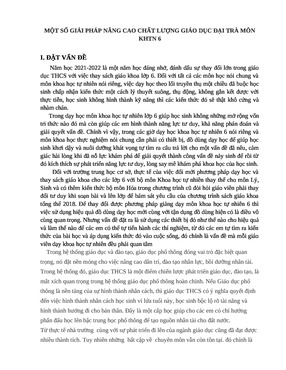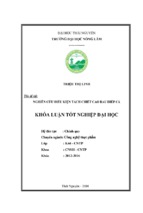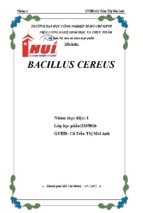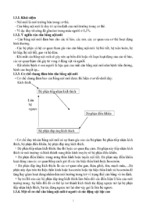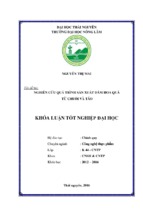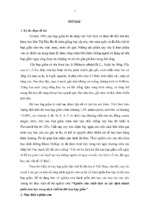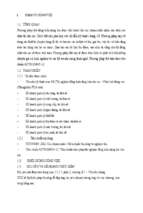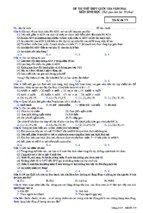Patterns in Prehistory:
Humankind’s First
Three Million Years,
Fifth Edition
Robert F. Wenke
Deborah J. Olszewski
OXFORD UNIVERSITY PRESS
Patterns in Prehistory:
Humankind’s First Three
Million Years
Patterns in Prehistory
Humankind’s First Three Million Years
Fifth Edition
Robert J. Wenke
University of Washington
Deborah I. Olszewski
University of Pennsylvania
New York
Oxford
OXFORD UNIVERSITY PRESS
2007
Oxford University Press, Inc., publishes works that further Oxford University’s
objective of excellence in research, scholarship, and education.
Oxford New York
Auckland Cape Town Dar es Salaam Hong Kong Karachi
Kuala Lumpur Madrid Melbourne Mexico City Nairobi
New Delhi Shanghai Taipei Toronto
With offices in
Argentina Austria Brazil Chile Czech Republic France Greece
Guatemala Hungary Italy Japan Poland Portugal Singapore
South Korea Switzerland Thailand Turkey Ukraine Vietnam
Copyright © 2007 by Oxford University Press, Inc.
Published by Oxford University Press, Inc.
198 Madison Avenue, New York, New York 10016
http://www.oup.com
Oxford is a registered trademark of Oxford University Press
All rights reserved. No part of this publication may be reproduced,
stored in a retrieval system, or transmitted, in any form or by any means,
electronic, mechanical, photocopying, recording, or otherwise,
without the prior permission of Oxford University Press.
Library of Congress Cataloging-in-Publication Data
Wenke, Robert J.
Patterns in prehistory: humankind’s first three million years / Robert J. Wenke,
Deborah I. Olszewski. — 5th ed.
p. cm.
Includes bibliographical references and index.
ISBN-13: 978-0-19-516928-7
ISBN-10: 0-19-516928-X (pbk.)
1. Prehistoric peoples. 2. Archaeology. I. Olszewski, Deborah. II. Title.
GN740.W46 2007
930.1—dc22
2005058961
Printing number: 9 8 7 6 5 4 3 2 1
Printed in the United States of America
on acid-free paper
For David, Ilene, Lorence, Dennis, and Judy, with much gratitude
Robert J. Wenke
For Dr. Elizabeth Ann Morris, my first archaeology professor and the
inspiration for my professional career
Deborah I. Olszewski
This page intentionally left blank
Contents
Preface
xii
Chapter 1: Prehistory, History, and Archaeology
1
What Are Archaeologists Looking For? (The Meaning of the Past)
Archaeology as the Reconstruction of Extinct Cultures and Their
Histories
5
Archaeology as a Body of Theories and Methods for Explaining
the Past
11
A Short History of Attempts to Understand the Past
12
Summary and Conclusions
32
Chapter 2: Fundamentals of Archaeology
41
Archaeologists and the Practice of Archaeology
The Basic Data of the Past
43
Analyses of the Past
57
Dating the Past
65
Summary and Conclusions
72
Chapter 3: The Origins of Culture
41
83
The Problem of Cultural Origins
83
The Nature of Culture 84
The Ecological Context of Cultural Origins
Models of Cultural Origins
115
Summary and Conclusions
122
97
Chapter 4: The Origins of Homo sapiens sapiens
132
Human Evolution and Radiation: 1.8? million to Circa 300,000
Years Ago 133
vii
2
viii
CONTENTS
Homo sapiens: Models of Origins
145
The Middle to Upper Paleolithic Period 157
Human Colonization of the World: Circa 30,000 –10,000
Years Ago 172
Summary and Conclusions
179
Chapter 5: The First Americans
194
Routes for the Initial Colonization of the Americas
Evidence for the First Americans
207
Early Paleoindian Economies
217
Summary and Conclusions
222
Chapter 6: The Origins of Agriculture
196
228
Agriculture, Domestication, and Sedentary Communities
231
Hypotheses About the Origins of Domestication, Agriculture, and
Sedentary Communities
235
Early Domestication and Agriculture: The Post-Paleolithic
Background
243
The Origins of Domestication, Agriculture, and Sedentary Communities
in Southwest Asia
246
Other Old World Domesticates
260
Agricultural Origins in the New World
262
Summary and Conclusions
269
Chapter 7: The Evolution of Complex Societies
279
Social Complexity and Human Values
284
Traditional Sociocultural Typologies
286
Contemporary Approaches to Sociocultural Typology 290
The Archaeology of Complex Societies
292
Explaining the Evolution of Civilizations: The Search for Causes
Summary and Conclusions
316
Chapter 8: Origins of Complex Societies in Southwest Asia
The Ecological Setting
325
Fundamentals of the Southwest Asian Archaeological Record
The Neolithic Origins of Southwest Asian Civilization 329
Initial Cultural Complexity 334
298
324
328
CONTENTS
Early States: The Uruk and Jemdet Nasr Periods
The Early Dynastic Period 349
Southwest Asia After 2350 b.c. 356
Summary and Conclusions
358
341
Chapter 9: The Origins of Complex Societies in Egypt
368
The Ecological Setting
370
Early Egyptian Agriculture 373
The Predynastic Period 375
The Archaic, Old Kingdom, and First Intermediate Periods
377
The Middle Kingdom and Second Intermediate Periods
384
The New Kingdom and Third Intermediate Periods
385
Ancient Egyptian Art and Thought 389
Egyptian Writing and Literature 391
Who Were the Ancient Egyptians?
395
Summary and Conclusions
396
Chapter 10: The Evolution of Complex Societies in the
Indus Valley 405
The Ecological Setting
407
The Neolithic Background to South Asian Cultural Complexity
The Neolithic–Urban Transition 411
Early Harappan Culture 412
Mature Harappan Civilization 415
The Decline of Harappan Civilization 422
Summary and Conclusions
424
Chapter 11: The Evolution of Complex Societies in China
The Ecological Setting
434
Early Farmers 435
Regional Neolithic Developments in North China
Early Complex Chinese Societies
440
Erh-li-t’ou Culture 443
Shang Civilization and Its Contemporaries
445
Early Imperial China
449
Summary and Conclusions
451
437
409
432
ix
x
CONTENTS
Chapter 12: Later Complex Societies of the Old World
456
Temperate Europe 458
A Brief Overview of Other Later Old World Complex Societies
Colonization of the Western Pacific Islands
471
Summary and Conclusions
475
468
Chapter 13: The Evolution of Complex Societies
in Mesoamerica 481
The Ecological Setting
484
Early Mesoamerican Farming
485
The Archaeological Record of Early Complex Mesoamerican
Societies
486
The Archaeological Record of Mesoamerican States in the Valleys
of Mexico and Oaxaca
496
The Maya 501
Postclassic Mesoamerica
516
The Spanish Conquest
523
Summary and Conclusions
523
Chapter 14: The Evolution of Complex Societies in Andean
South America
533
The Ecological Setting
536
Early Hunters and Gatherers
537
The Agricultural Basis of Andean Civilization 538
The First Complex Societies in Andean South America
The Early Horizon 546
The Early Intermediate Period: Early States
549
The Middle Horizon: Competing States
552
The Late Intermediate Period: Early Empires
554
The Late Horizon: The Imperial Transformation 554
The European Conquest
557
Summary and Conclusions
558
539
Chapter 15: Early Cultural Complexity in North America
The Ecological Setting
568
The North American East
569
The North American Southwest
583
Summary and Conclusions
594
565
CONTENTS
Chapter 16: Prehistory in Perspective
Our Intellectual Heritage 601
Lessons of Prehistory 606
The Future of Archaeology 609
Art Credits
611
Index 615
601
xi
Preface
We find ourselves in a bewildering world. We
want to make sense of what we see around us
and to ask: What is the nature of the universe?
What is our place in it and where did it and we
come from? Why is it the way it is?
Stephen W. Hawking1
Our journey into the past several million years of human prehistory and early history—
beginning about the time of the first appearance of stone tools and extending to the recent
past—is an endeavor to see more clearly and to understand ourselves, modern human
beings (Homo sapiens sapiens). Ours is a story of “fits and starts,” of human ancestors and
of societies that shed light on natural and cultural experiments, both those that succeeded
and those that failed. The key, of course, is diversity, a characteristic of both modern
humans and our ancestors before us.
APPROACHES TO PREHISTORY
The story of prehistory and early history is the story of all of us living today. Across the vast
bounds of time and space, archaeology reveals glimpses into the variety of behaviors and
adaptations of countless and nameless individuals and groups. When we reach the period
of our earliest recorded history, we can put names to some of these individuals and groups,
but others remain more obscure. It is thus the goal of archaeology to integrate evidence—
stone tools, pottery sherds, animal bones, plant remains, and a myriad of other data—with
theory to reconstruct the many behaviors that formed the archaeological record of huntergatherers, farmers, pastoralists, and members of early complex societies.
Theoretical approaches differ considerably within archaeology today, and this edition
of Patterns in Prehistory offers examples of how these different approaches affect the
interpretation of the data of the archaeological record. The overall strategy of this edition,
however, is to present archaeological interpretation in the context of the scientific method.
Interpretations of data using a particular theoretical approach, for example, can be
contrasted with interpretations offered by a differing theoretical approach. In doing so,
we can examine which of the explanations is currently better supported and how one or
xii
PREFACE
both of these explanations can be refined once a comparison is made. Scientific research,
after all, is fundamentally a method of proposing explanations, testing them, and then
revising the explanations so that the fit between data and theory becomes closer over time.
That is the intention of this edition: to facilitate students’ understanding of this approach
to explanation and interpretation and the lively debates that result.
ORGANIZATION OF THE BOOK
The fifth edition of Patterns in Prehistory begins with background on the development and
contributions of theories and archaeological methods. Next we introduce readers to the
wide diversity of past societies through the use of several broad themes. These provide
both numerous examples—some similar and some different—of the evidence and the
interpretations that are used to arrive at a better understanding of our past and its relevance
to us.
Themes
The themes that form the backbone of the organization of this edition are:
• Intellectual background: discusses the ideas and theories that have contributed to
archaeological approaches to an understanding of the past
• Archaeological methods and techniques: describes the types of evidence collected by
archaeologists, how these data are analyzed, and the technology used
• Culture: examines issues surrounding how culture develops and related models, the
evidence for early culture, comparisons with nonhuman primates, and the archaeological record for early human ancestors
• Emergence of anatomically modern humans: presents information on human
ancestors in the genus Homo, their migration into Eurasia, models for the origins of
anatomically modern humans, and the colonization of the world outside of Africa,
including the Americas, by modern humans
• Food-producing economies: discusses models for the origins of agriculture in the
Old and New Worlds, with examples from Southwest Asia, Egypt, China,
Mesoamerica, Andean South America, and North America
• Complex societies, civilizations, and states: examines models for the origins of complex societies, civilizations, and states, with examples from Southwest Asia, Egypt,
the Indus Valley, China, Mesoamerica, Andean South America, temperate Europe,
and North America
Arrangement of Chapters
Chapters from the previous edition of Patterns in Prehistory have undergone considerable
reorganization. To help readers, we have introduced more, and more standardized,
headings within chapters to serve as signposts through the text; we have repositioned data
and discussions to create better flow of thought and readability; and we have introduced
timelines in each chapter to provide a better comparative context.
xiii
xiv
PREFACE
Those chapters dealing with the intellectual heritage, archaeological methods and
techniques, and the origins of culture (Chapters 1–3) of necessity have topical outlines that
differ substantially from one chapter to the next. Chapter 1 examines the body of scientific
thought and intellectual background that underlie theories used to explain the past.
Chapter 2 deals with topics concerning how archaeologists gather information and analyze
data. Chapter 3 presents theoretical background to understanding the appearance of
culture, as well as examines the archaeological record of the earliest human ancestors.
The next two chapters (Chapters 4 and 5) continue the theme of the archaeological
record of earlier prehistory. Chapter 4 examines models and data used to interpret early
human ancestors, delves into the issues surrounding the origins of anatomically modern
humans—us—and follows early humans as they colonize the Old World. Chapter 5
continues the colonization theme through discussion of the initial peopling of the New
World and the adaptations of these early settlers.
An interlude is provided in the next two chapters (Chapters 6 and 7), as these stress
theoretical background to two intriguing research problems. Chapter 6 examines the
origins of agriculture and food-producing economies in the Old and New Worlds. Chapter
7, on the other hand, discusses the origins of complex societies in both the Old and New
Worlds.
Chapters dealing with case studies of the development of complex societies (Chapters
8–15) examine, with slight deviation for the subject matter treated in Chapters 12 (later
Old World complex societies) and 15 (early cultural complexity in North America):
•
•
•
•
Timeline
The ecological context
The archaeological background for agriculture and early farming societies
The archaeology of the major periods in the development of complex societies, civilizations, and states, as well as theoretical perspectives
• The role of art, religion, and writing systems in these societies
• The collapse, demise, disappearance, or transformation of early complex societies,
civilizations, and states
• A summary and conclusions section
Finally, Chapter 16 provides an epilogue.
NEW TO THIS EDITION
In updating Patterns in Prehistory, we have drawn on Rob Wenke’s revisions for the new
edition, insightful comments from reviewers, and Deb Olszewski’s expertise and research
experience in the Middle East, American Southwest, and earlier periods of prehistory, as
well as Deb’s experience teaching with previous editions of Patterns in Prehistory. New
materials for this fifth edition include:
• Expansion of graphic presentations, including 70 percent more photos and illustrations throughout the book, timelines added to all relevant chapters (Chapters 3–8
and 12), existing timelines updated (Chapters 9–11 and 13–15), and an overview
timeline added to illustrate the temporal framework for the textbook.
PREFACE
• Facilitation of comprehension through reorganization of chapters to standardize
presentation of information, streamlining of text, updating of chapter bibliographies
and endnotes, and use of current spellings of names for places, cultures, objects,
and people
• Updating of chapter information, including addition of material on technology such
as Geographic Information System, global positioning system, and total stations
(Chapter 2); discussion of biomechanical studies that model bipedalism in early
human ancestors (Chapter 3); examination of site taphonomy in the context of
recent revisions to interpretations of cultural activities at sites (Chapters 2, 3, and
4); the latest discoveries of fossils of human ancestors (Chapters 3 and 4); addition
of the Pacific coast-hopping hypothesis and the Atlantic route idea for the initial
peopling of the Americas (Chapter 5); consideration of the role of genetics in the
interpretation of the origins of anatomically modern humans (Chapter 4), the
colonization of the Americas (Chapter 5), and the spread of food-producing
economies (Chapter 6); revision of information on local ecological contexts for the
origins of agriculture (Chapters 6 and 10) and the origins of complex societies
(Chapters 7 and 8); improved discussion of the Chinese Neolithic (Chapter 11);
enhanced treatment of Iron Age Europe (Chapter 12); addition of recent ideas about
the “collapse” of the Classic Maya (Chapter 13); corrected description of the
European Conquest of Andean South America (Chapter 14); and expanded discussion of Chaco Canyon and interpretations of its significance in the American
Southwest (Chapter 15).
FEATURES AND BENEFITS
The fifth edition of Patterns in Prehistory has retained the popular features and benefits that
characterized its earlier editions, as well as added others that facilitate comprehension:
• Readability, accessibility, breadth, and humor; in-depth coverage of major complex
societies, civilizations, and states with discussions that integrate theory and data
for the reader; literary quotes that personalize the text; and discussion of major
transitions in human prehistory, as well as colonization events, that examines the
processes involved in the development of human culture, human behavior, and
socioeconomic adaptations
• Chapter timelines that provide overviews to help the reader place events in context;
examples of scholarly debates and varying interpretations that exemplify how
theory and method are integrated to derive interpretations and how interpretations
are revised over time; an augmented visual component that enhances reader comprehension of topics; and updated chapter bibliographies and endnotes that provide
additional resources for students and instructors
NOTE ON DATES
Dates for archaeological sites, fossil human ancestors, origins of agriculture, and so
forth are given in this edition in three forms. These are “years ago,” corresponding to
xv
xvi
PREFACE
uncalibrated years before the present (b.p.), and “b.c.,” corresponding to uncalibrated
years before Christ. The difference between the two time scales is 1,950 years, which
represents a.d. 1950, the benchmark date conventionally used in radiocarbon dating as
the zero point for calculating radiocarbon ages (see Chapter 2). Thus, for example, a date
of 10,000 b.c. can be roughly translated as 11,950 years ago. Dates given in this edition for
“a.d.” are often known calendric dates because they can be determined from crossreferences to written documents from several of the early civilizations and states or have
been calibrated.
As discussed in Chapter 2, conventional radiocarbon dates are known to fluctuate in
accuracy for certain time periods. Researchers have been able to compensate for some of
these fluctuations by using calibration (correction) curves. The original basis for calibration
was founded on dendrochronology (tree rings; see Chapter 2), which can be used to
calibrate dates in the period from 0 to 12,400 cal B.P.2 Recent technical advances, especially
use of data from marine records, currently allows the calibration of terrestrial radiocarbon
dates in the period from 12,400 to 26,000 cal B.P.3
Several scholars working on archaeological materials from various parts of the world
have published new calibrated sequences of dates for their regions (for example, see
Chapter 5). These, however, do not always provide calibrated dates for individual sites, so
that integrating the new calibrated sequences with the previously reported uncalibrated
dates for some sites is not always straightforward. To promote clarity and minimal
confusion about dates, this edition of Patterns in Prehistory continues to use the years ago
and b.c. uncalibrated dates.
ACKNOWLEDGMENTS
This edition of Patterns in Prehistory would not exist without the dedication and hard work
of Jan Beatty and Karen Shapiro at Oxford University Press. We thank them for their
editing, support, insights, and the production of this edition. To have been brought to Jan’s
attention as the person to work on this edition, however, was through the efforts of Harold
Dibble, to whom I owe an enormous debt of gratitude. The detailed comments provided
by Professors Thomas Charlton (University of Iowa), Terence N. D’Altroy (Columbia
University), Ronald Hicks (Ball State University), Kenneth G. Hirth (Pennsylvania State
University), Laura J. Levi (University of Texas at San Antonio), Michael Malpass (Ithaca
College), John Rick (Stanford University), Ralph M. Rowlett (University of Missouri –
Columbia), Robert Santley (University of New Mexico), Andrew Sherratt (Sheffield
University), Mark Tveskov (Southern Orgeon University), Rita Wright (New York
University), and Paul Zimansky (Boston University) are also much appreciated, as they
corrected various details both large and small, offered clarity of thought, and pointed the
way to improved discussions.
Archaeologists often say that it is possible to know how another archaeologist will think
about or interpret the past if they know his or her “kinship.” They mean, of course, those
professors with whom one studied, because like students everywhere, our perspectives
partly reflect those of our teachers. Of the many professors I could mention, I will limit
myself to two. As an undergraduate major in anthropology at Colorado State University, I
PREFACE
was greatly influenced by Liz Morris. In the small and serendipitous world of archaeology,
our association did not end there. We have remained friends over several decades, with one
of my greatest surprises being when I found out that the Paleolithic stone artifact collections
from the site of Warwasi, Iran—that I studied in the late 1980s—were from an excavation
project in which Liz participated in 1960! During my graduate days at the University of
Arizona, I was a student of Art Jelinek’s, and thus explains my mainly Old World (and
Paleolithic) focus. To Art, I owe insights into the nature of stone tool studies, exposure to
Bordian systematics, and a penchant to see if explanations can be turned on their heads and
reexamined.
Intellectual kinship involves not only those with whom we studied, but also lively
interactions with friends and colleagues in the discipline over the years. In this regard, I
would like to thank Patty Anderson, Mike and Margaret Barton, Ofer Bar-Yosef, Mark
Baumler, Mary Bernard, Walt Birkby, Phil Chase, Anna Belfer-Cohen, J. Simon Bruder,
Geof Clark, Nancy Coinman, Jason Cooper, Harold and Lee Dibble, John Dockall, Dave
Doyel, Hans-Georg Gebel, Naama Goren-Inbar, Nigel Goring-Morris, Leslie Hartzell,
Zeidan Kafafi, Kathy Kamp, Daphne Katrinides, Ian Kuijt, Cathy Lebo, Susan Lebo, Helen
Leidemann, Heidi Lennstrom, Shannon McPherron, Andrew Moore, Dani Nadel,
Maysoon al-Nahar, Mike Neeley, Gordon Nishida, Jane Peterson, Leslie Quintero, Gary
Rollefson, Barb Roth, Utsav Schurmans, Alan Simmons, Peggy Trachte, John Whittaker,
and Phil Wilke. This is, of course, only a partial list, and I also thank the rest of you who
are not mentioned here by name. Finally, but not least, I extend thanks to countless
students in my classes over the years for their refreshing perspectives and to the people of
Jordan and Egypt, countries in which I have been fortunate enough to do the majority of
my research.
My Old World research has been funded by the National Science Foundation, the
Leakey Foundation, the National Geographic Society, the Wenner-Gren Foundation for
Anthropology, the Fulbright Program, the University of Pennsylvania Museum of
Archaeology and Anthropology, the American Philosophical Society, and the Joukowsky
Family Foundation, and I am grateful to them for the research opportunities that resulted.
In the New World, I have worked on a number of projects funded through Cultural
Resource Management auspices, including some of the most memorable sites and regions
of the American Southwest. Cultural Resource Management funding also provided me with
opportunities to study the pre-Contact prehistory of Hawai’i.
Deborah I. Olszewski
NOTES
1. A Brief History of Time: From the Big Bang to Black Holes, 1988, p. 171. New York: Bantam Books.
2. http://calib.qub.ac.uk/calib/; The use of B.P. in caps is generally understood to refer to calibrated dates, while
the use of b.p. in lowercase refers to uncalibrated dates.
3. http://calib.qub.ac.uk/calib/; it is becoming common to refer to calibrated dates using the designation of “cal
B.P.” or “cal B.C.”
xvii
TODAY
A.D. 1500s
PREHISTORY, HISTORY,
AND
ARCHAEOLOGY
xviii
Spanish arrival in the Americas
A.D. 1476
Beginning of the Inka empire in South America
A.D. 1150
Beginning of the Aztec state in Mexico
A.D. 1000
Beginning of Hohokam, Ancestral Pueblo and Mogollon
complex society in the North American Southwest
6500 B.C.
Origins of agriculture in Asia
A.D. 800
Beginning of Mississippian complex society in the
North American Southeast
7500 B.C.
Origins of agriculture in Africa
A.D. 600
Initial date for colonization of Hawai’i
8000 B.C.
Origins of agriculture in Mesoamerica
A.D. 600
Appearance of Wari and Tiwanaku states
in South America
8500 B.C.
Origins of agriculture in the Middle East
A.D. 300
Beginning of Classic Maya civilization in
Mesoamerica
A.D. 1
15 B.C.
Beginning of the Teotihuacán state in the Valley
of Mexico and Moche civilization in South America
20–15,000 years ago
Beginning of colonization of the
Americas by Paleoindians
32,000 years ago
Neandertals become extinct
40,000 years ago
Modern humans begin to colonize
Europe; explosion of art and symbolism
60,000 years ago
Beginning of colonization of Australia
by modern humans
Roman conquest of Europe
475 B.C.
Beginning of La Tène complex society in Europe
800 B.C.
Beginning of Halstatt complex society in Europe
1000 B.C.
Beginning of Mycenaean civilization in the Aegean
1300 B.C.
Appearance of Olmec complex society in Mesoamerica
1500 B.C.
Beginning of spread of Lapita Complex in the Pacific
1600 B.C.
Appearance of Shang civilization in China
2000 B.C.
Appearance of Minoan civilization in the Aegean
2000 B.C.
Origins of agriculture in Eastern North America
3100 B.C.
Beginning of Egyptian civilization
3200 B.C.
Beginning of Harappan civilization in the Indus Valley
3600 B.C.
Beginning of Mesopotamian civilization in
the Middle East
5700 B.C.
Origins of agriculture in South America
6000 B.C.
Agriculture begins to spread into Europe
from the Middle East
100,000 years ago
Early modern humans begin to radiate
out of Africa to the Middle East and Asia
160,000 years ago
Early modern humans (Homo sapiens)
appear in Africa
230,000 years ago
Neandertals (Homo neanderthalensis)
appear in Western Eurasia
1.7 million years ago
Homo erectus grade begins to migrate
out of Africa to Eurasia
2.5 million years ago
Genus Homo appears in Africa
2.6 million years ago
First stone tools appear in Africa
3 million years ago
Beginning of radiation of Australopiths
in Africa
5 million years ago
Australopith hominins appear in Africa
1
Prehistory, History, and Archaeology
History is philosophy teaching by examples.
Dionysius of Halicarnassus (c. 40 b.c.)
History is bunk.
Henry Ford
T
he archaeologist-adventurers of film and fiction never seem too concerned about
what they are looking for or why they want it. “It” is usually something like a curseprotected pharaoh’s tomb treasures or the biblical Ark of the Covenant—something
intrinsically interesting and protected by enough snakes, traps, or villains to require a
romantic hero for its discovery.
In this prosaic age it will come as no surprise to the reader that contemporary archaeology differs considerably from these fictional versions, as this book will make clear. Yet, in
a sense, archaeology is in fact a uniquely interesting science. And certainly its origins are
in rather romantic bygone eras. In the early 1800s, for example, the Italian adventurer
Giovanni Belzoni looted dozens of ancient Egyptian tombs in Thebes (near modern Luxor)
and sold their riches in Europe. Belzoni crept and crawled through miles of tunnels in the
stinking, dusty air of these crypts, smashing hundreds of mummies as he went:
[Al]though, fortunately I am destitute of the sense of smelling, I could taste that the
mummies were rather unpleasant to swallow. After the exertion of entering into such
a place, through a passage of . . . perhaps six hundred yards, nearly overcome, I sought a
resting place. . . . [B]ut when my weight bore on the body of an Egyptian, it crushed like a
band-box. . . . I sank altogether among the broken mummies, with a crash of bones, rags,
and wooden cases. . . . [E]very step I took I crushed a mummy. . . . I could not pass without
putting my face in contact with that of some decayed Egyptian; but as the passage inclined
downwards, my own weight helped me on: however, I could not avoid being covered with
bones, legs, arms, and heads rolling from above. . . . The purpose of my researches was to
rob the Egyptians of their papyri.1
Even the more scholarly of the early archaeologists, if not so candidly larcenous as Belzoni,
at least had a clear simple vision of what it was they were after and a rather romantic reason
for their quest. In 1876, for example, the German Heinrich Schliemann, his imagination
fired by his schoolboy readings of Homer (in the original Greek), ravaged the archaeological site of Hissarlik, in western Turkey, looking for the home of the heroes of the Trojan
1
- Xem thêm -

